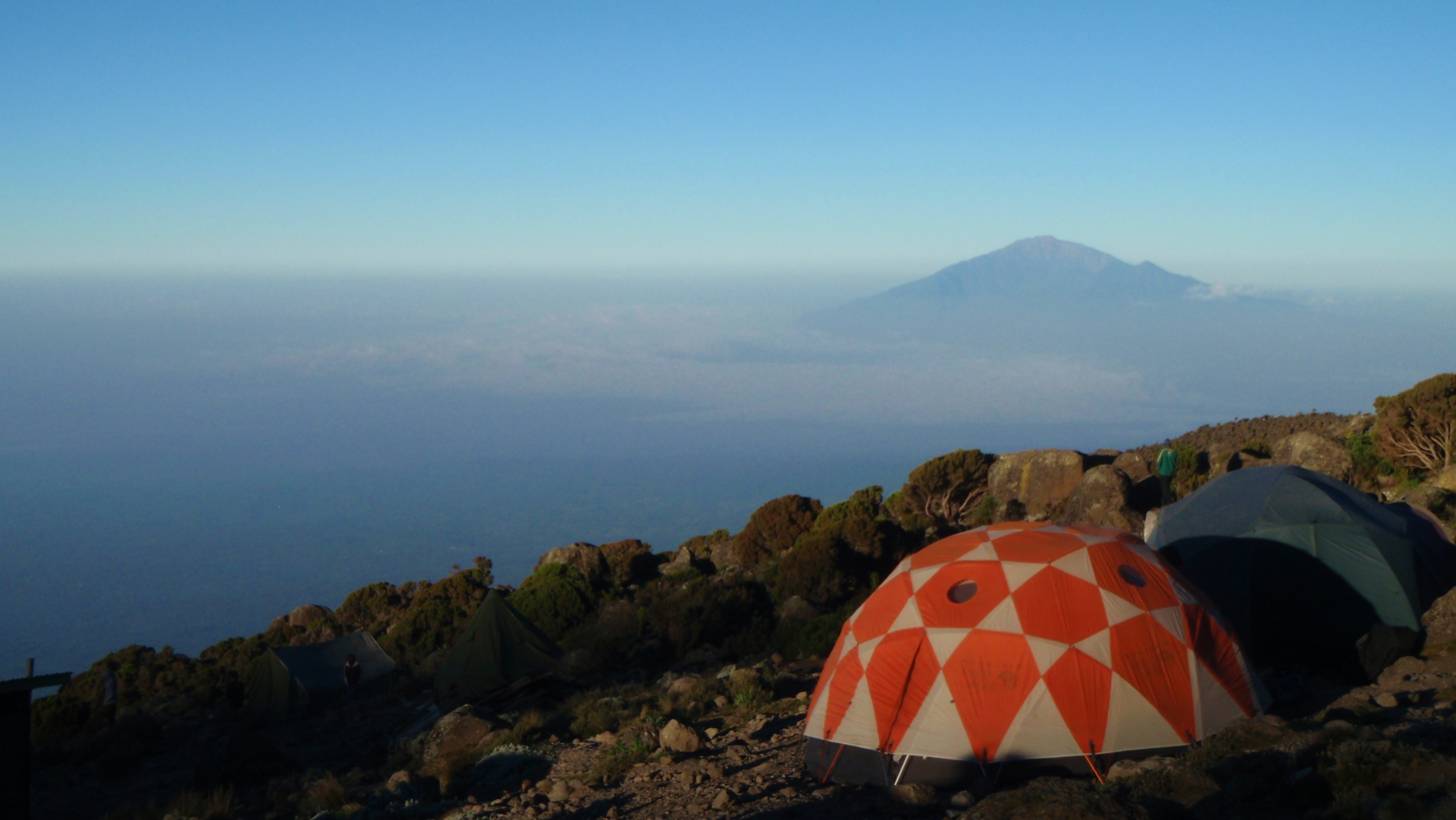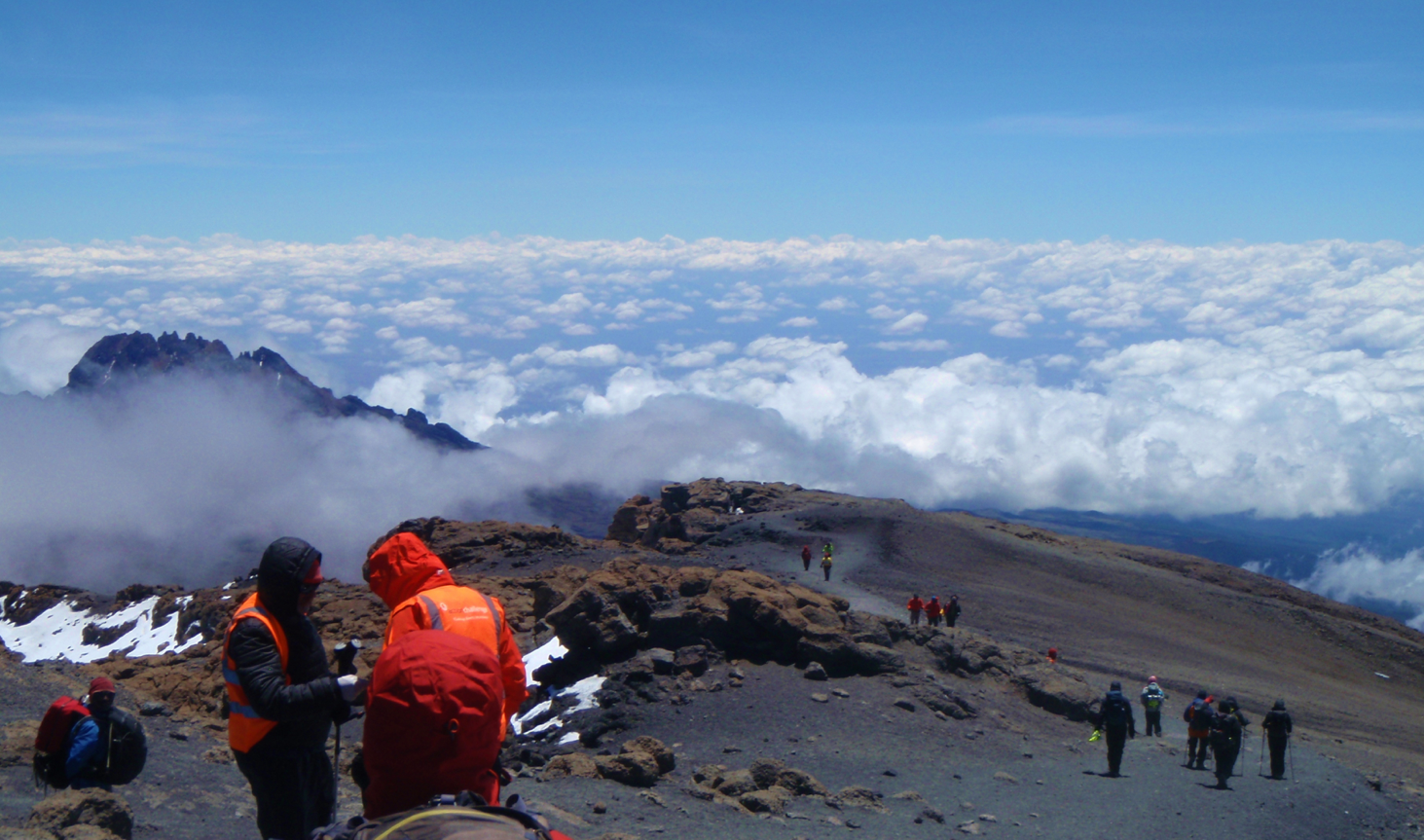A Guide to Kilimanjaro

Posted 19 July 2019
With Comic Relief’s celebrity adventurers once again putting Kilimanjaro in the spotlight back in March, we asked International Mountain Leader and expedition guide Alex Bergin for his advice on tackling Africa’s highest peak.
At the risk of stating the obvious, Kilimanjaro is rather high. At 5,895m, it is over four times the height of Ben Nevis and a solid couple of thousand meters higher than required to present serious altitude-related health risks. So, despite it being sold as little more than an off-the-shelf trek, it needs to be taken seriously.
Have Realistic Ambitions
As someone once said, “Expectations are premeditated resentments”. Even the best trekking company in the world can only offer you an opportunity to get to the top of Kilimanjaro. Weather, fitness, physiology and simple accidents can stand in your way, so plan to enjoy the whole journey. If yours is nothing more than a vainglorious quest to take a summit selfie, you will risk a colossal disappointment should things not go your way.
A week-long African trek as part of a wonderfully diverse group of people can be viewed as being like a bottle of fine wine, so resolve to savour every drop, rather than fret about finishing the bottle.
Listen to your Guide
If for any reason you are told to descend with a guide, do not argue. They are there to get you off the hill safely, not to the summit at all costs. Kilimanjaro is not a once-in-a-lifetime experience and even the better itineraries (with a minimum of 6-days trekking, for safety reasons) can be done with only 6 days off work. If AMS or an other illness requires your descent, do so and live to fight another day.
Do the Hard Yards
There is nothing you can do to alter your genetic predisposition to coping at extreme altitude, but research has shown that exertion, as in extreme cardiovascular effort, is the main controllable factor in getting Acute Mountain Sickness (AMS). In light of this knowledge, teams on Kili move very slowly above 3,000m and you can further reduce your physiological stress levels by being as fit as possible, therefore making it as easy as possible. The view from Kili is pretty special, so chill out on the way up and take it all in.

Get in the Swing of Things
There is a lot of singing and dancing done by guides and porters on Kilimanjaro and joining in is a fantastic part of the experience. There are few sights as depressing as that of an African chorus in full voice, faced with a line of trekkers either standing with their arms crossed or watching through the screens of their phones. Life is not a photo opportunity. Live it.
Cover Up
Don’t be fooled by the low temperatures; the combination of being at high altitude and only 200 miles south of the Equator means the sun on Kili is about as fierce as it gets. Any gaps between clothes that expose skin will result in serious damage. Sun hats (not baseball caps), collared shirts (or buffs) and high-factor sun cream are all absolutely vital.

Pack Wisely
It is possible to trek Kilimanjaro in fairly innocuous conditions, with manageable warmth low down slowly turning to little worse up top than a clear February day in the UK. You may, however, be faced with torrential rain on day one and a wind chill of -25C on summit day. As always, hope for the best, but prepare for the worst. Of the usual items on a four-season trek kit list, I would stress bringing: ski, mountaineering or down mittens, as gloves will not be warm enough; a mid-weight down jacket (not a micro-baffle one, unless you run really warm); sports sunglasses; fleece pants (for evenings, sleeping and summit day); and a sleeping bag rated to at least -10C. Last month I used a Tundra Pure -20 with 800g of 96% down in their 180cm length shell, which proved warmer than I needed, but kept me exactly as snug as I wanted. Oh, and take at least two packs of biodegradable wet wipes, for a variety of uses…
Share the Wealth
African porters and guides generally do not have the access to high quality trekking/mountaineering kit enjoyed by most of their clients. If you have any spare fleeces, waterproofs, ski jackets, gloves, mitts, hats, trekking boots/socks, etc. then bring them along (or donate some of the kit you use on the hill once you’ve safely descended). It will be much appreciated and goes a long way to making working conditions safer. Many trekkers regret not paying enough attention to this, so start rummaging in your kit closet well before you start packing.

Alex Bergin
